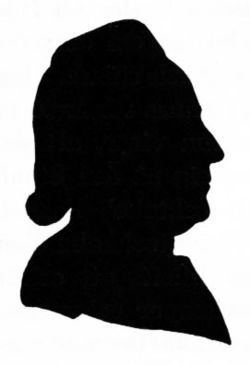Full Name Petter Stenborg Children Carl Stenborg Spouse Anna Kruger | Name Petter Stenborg | |
 | ||
Born 1719 Sweden People also search for | ||
Petter Stenborg (1719 – 6 November 1781) was a Swedish actor and theater director who played an important role of the continuation of the native speaking theater in Sweden. He is regarded as one of the greatest pioneers in the theatre-history of his country; during the period of "exile" for the native-language theatre in the reign of king Adolf Frederick of Sweden, he kept the Swedish-speaking theatre alive during the 1750s and 1760s, and thus was the link between the closure of the first Swedish theatre in Bollhuset in 1753, and the opening of the first lasting theatre/opera in 1773.
Contents

Early career
Originally a soldier in the Royal guard, he became a member of the first troupe of Swedish actors at the theater of Bollhuset in Stockholm in 1746. In the Bollhus Theater he performed in Syrinx by Lars Lalin or Peter Lindhal, composed by Johan Ohl, opposite Elisabeth Lillström in 1747–48, (also the debut for Elisabeth Olin), were called one of the most valuable of the theater's actors by the director Charles Langlois in 1748 and is believed to have had the leading role in Slafve-ön (The Slave island) by Marivaux in 1749–50, though the details of his occupation in Bollhuset are unclear.
Director
When the Swedish troupe, active on the theater since 1737, was fired in 1753 and replaced with a French troupe, the Du Londel Troupe, half of the staff left for the country side to work as a travelling theater company under Peter Lindahl and Johan Bergholtz. After an attempt to be an inkeeper, Petter Stenborg applied and was given permission to lead a theater company in the city of Stockholm, and between 1758 and for twenty years forward, he performed as the director of a troupe of native actors in both Stockholm, in temporary locals, and touring the country, mostly in Finland, in companionship with the tight-rope-walker von Carl Fredrik von Eckenberg; when the troupe visited Åbo in 1761, it was probably the first time a theatre troupe visited this part of the country.
He is most known for his activity in Stockholm, where he preserved a Swedish speaking theater, just as the theater company of Peter Lindahl did in the country side, during a period when the French culture otherwise dominated the Swedish stage. His theater company did not have a very good reputation; the actors were from: "jail, soldiers, alcoholized lawyers, servants and washing-women", the costumes was from ragshops and the music from public-houses, (were they often performed) and the plays was described as vulgar. This judgements, however, was given by members of the upper classes, who preferred the French Theatre in Bollhuset, but the Stenborg Company was appreciated by the public, who could not understand the French troupe at Bollhuset, and they represented a native speaking theater in the 1750s and 1760s. They are also perhaps the first troupe to have performed in Finland, though this was only temporary.
Among his actors were Adolph Fredrik Neuman, former tailor Jean Löfblad, the Harlekin of the troupe; Johanna Catharina Embeck, earlier active both at Bollhuset and the Lindahl troupe, who was to be active at the Stenborg troupe until the 1790s and thereby one of the Swedish 18th century actors active longest in her profession - and the prima donna Christina Catharina Lindberg, also earlier active in Bollhuset.
Later career
In 1771, King Gustav III of Sweden fired the French theater company, and the Swedish actors, led by Petter Stenborg, saw their chance and asked to perform a play at the opening of the parliament of 1772, asking the monarch in his letter to protect the native speaking theatre. At the opening of parliament in 1772, the troupe of Petter Stenborg appeared before King Gustav III and all the public in Bollhuset after the French troupe had left it, in which play the son of Stenborg, Carl, again asked for protection for the native theatre. After this, the monarch decided to found a native speaking opera and theatre, though not with the Stenborg troupe.
In 1773, the troupe, whose biggest problem was the difficulty to get locations, and had to move from one place to the next over the years, finally found a good place to perform; the so-called Humlegårdsteatern, the theater in Humlegården, where they performed every summer until 1780. This was described as a sort of pavilion in the garden of Humlegården, where they played simple comedies in the native language, sometimes caricatures of the solemn performances in Bollhuset, and was a very popular part of the city's summer life; the opera-performances Thetis och Phelée became Petis och Nasenblom; Acis och Galathea became Kasper och Dorotea.
Petter Stenborg was the father of the famous Swedish singer and actor Carl Stenborg; his wife Anna Sara Krüger had been a housekeeper in the house of count Adam Horn, and through her contacts, his children was given a much better education than himself, and Carl was accepted at the theater of Bollhuset where he became a star. Carl was thereby forbidden to perform in his father's company, but he advised him. In 1780, Petter Stenborg retired, and his company was taken over by his son, who immediately searched for a real house for the troupe, where they could perform all year. He found one at Eriksberg, thereby called the Eriksberg Theatre, but it was badly placed outside town. In 1784, he found the final location for the company at Munkbron, called the Munkbro Theater but commonly referred to as Stenborg Theatre, who were the second most important theatre in Stockholm until the monopoly of the Royal Dramatic Theater closed it down in 1799.
